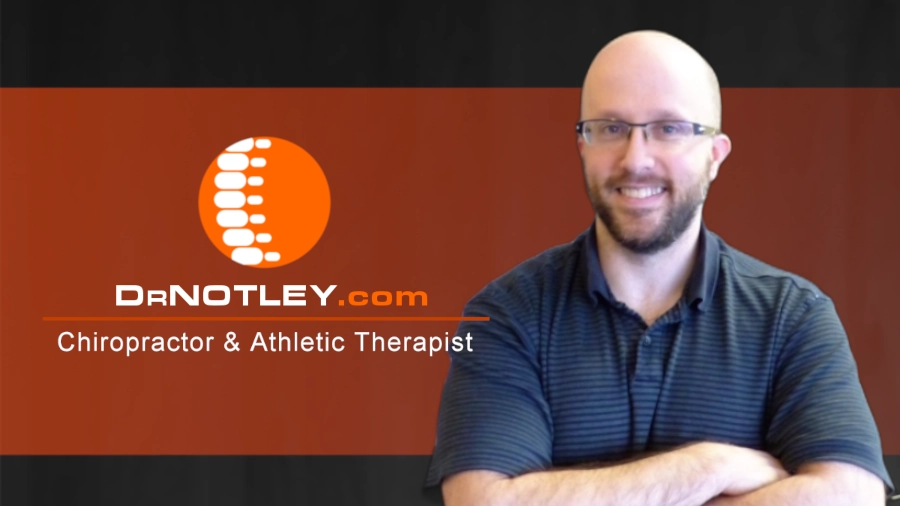Once there is a proper diagnosis the next step is to first get pain under control. As a Chiropractor I will likely use spinal manipulation (an adjustment) if there are poor mechanics to the joints. I may also use acupuncture, TENS, or Active Release Technique (ART). Once pain is under control the next step is to fix the problem. One of the problems I find in many clients is that they have poor mechanics when it comes to bending over to
pick up an object. They tend to bend more at their back which puts considerable amount of strain on the small muscles of the spine and less strain on the large powerful muscles of the glutes and hamstrings. At the same time I find these clients also have poor hamstring flexibility (remedied using Active Release Technique and/or stretching). In addition, when I assess their strength I find that they have either weak hamstrings, weak gluteal muscles or both. All of these components can predispose a person to lower back pain.
This is what I recommend to my clients that have these weak links.
- Strengthen the strained muscles (lower back)
- Stretch the hamstrings
- There are a number of ways to stretch the hamstrings. I typically recommend these three stretches depending on your degree of inflexibility:
- Strengthen the hamstrings and gluteal muscles
- There are a number of ways to strengthen the gluteal and hamstrings.
- The bridge is one of my staple exercises for strengthening the gluteal muscles.
- The hamstrings can be strengthened by performing hamstring curls or straight legged bridges
- To strengthen both muscles, as well as the lower back, I recommend the Romanian Deadlift which is a hip hinge exercise but with adding weight
The Romanian Deadlift
There are numerous variations of the deadlift but I like this one because of its emphasis on the gluteal and hamstring muscles. You should note that this is not an exercise I recommend to a client right off the bat. I first teach them to perform the hip hinge movement. To perform correctly the client must be able to bend at their hips. Often times clients have no concept of this movement but with proper guidance this can be fixed. If you perform this exercise correctly you should feel some strain in the gluteal or hamstring muscles and little strain in the lower back. Note: In the video I would like to see the knees bent more.
Once we have mastered this movement we can progress to the Romanian deadlift:
This is a very functional exercise that combines strength training of the posterior chain of the body (muscles on the back side of the body) and the common daily movement of bending over to pick up an object. With proper technique the lower back muscles are exercised, but not excessively strained, and the weak muscles of the gluteals and hamstrings are strengthened as well. In addition, when we train, our body adapts to that activity and the strength does not transfer well to other activities. Training the back in a less practical manner doesn’t transfer well to practical movements like bending over. Therefore using this exercise makes sense to be added to a back program. I should note though that this exercise can be complex so having a professional trained in appropriate lifting techniques is highly recommended.
Now you might be thinking, “I can’t do that!? Isn’t lifting bad for my back?”. My answer to that is,”No!”. It IS bad when we do not perform it properly, have weak links or we perform too much of the activity that you can’t recuperate properly. When clients start training their back they often return and say they are getting worse because their back is sore after working out. Training the back with proper technique is important and when you start training you will have muscle soreness. This is likely not damaging pain it is delayed onset muscle soreness a normal part of working the body harder than it has before. Working the body harder than it is used to is a key component to the rehabilitation of an injury or to becoming a world record athlete. That is the beauty of the Athletic Therapy profession we approach the care of your back like we approach a world
class athlete; we work to get you better than you were before and get you back ask quickly as possible.
I always recommend rehabilitation exercises to my programs for all of clients. Sadly many people choose to stop treatment when they are out of pain. This is a detriment and may be a reason why people have relapses of back injuries. Making the body stronger and more fit than it once was is crucial to back care and overall
physical health.
Always strive to be better
When you think of muscle and joint injuries think of me.
Originally posted on May 17, 2022 @ 4:40 pm
